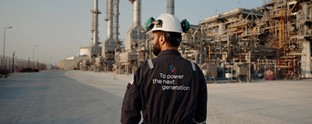Timeline: FIFA World Cup

During the 2018 FIFA World Cup, an examination of the tournament’s previous designs revealed distinct visual eras in its history. From early surrealist and art deco posters to late-century minimalist logos and recent conceptual emblems, each design adds to the tournament’s rich history and embraces each host country’s unique culture

1930-1950 For the first four World Cups, beginning in 1930, organisers designed posters instead of logos to celebrate the event. The 1930 Uruguay poster features an abstract style, influenced by the avant-garde and surrealist movements popular in that era.
1954 The 1954 Switzerland World Cup was the first to be televised. It was also the first World Cup to create a distinct logo for the tournament, instead of event posters. With a global television audience, posters became an inefficient way to promote the tournament, encouraging the creation of simple logos that could be added over televised programming.


1966 The 1966 World Cup, hosted by England, was the first to use a mascot and an official FIFA logo. Previously, all logos were unofficial and host countries had complete creative control. The mascot, World Cup Willie, is a lion wearing a Union Flag jersey featuring the words ‘world cup’ across the front. The logo maintains previous years’ themes by featuring a football and a globe, although it differentiates itself by more prominently featuring the host’s flag.
1978-1998 Beginning with the Argentinian World Cup in 1978, the following two decades of official logos were made simpler and had a consistent minimalist approach. They each featured merely a football, the country’s name, the year and accent colours of the nation’s flag.


1986 Mexico’s World Cup in 1986 introduced several changes to the tournament. Having previously hosted in 1970, Mexico became the first country to host the World Cup twice. The 1986 championship also introduced format changes, including a simultaneous kick-off for the final two matches. The 1986 logo also reintroduced the globe to the World Cup logo for the first time since 1966.
2002 The 2002 Korea/Japan World Cup logo was unveiled simultaneously in Seoul and Tokyo in 1999. This World Cup was the first hosted in Asia and the first hosted by more than one nation. In the 21st century, FIFA’s World Cup logos started to become more conceptual, using abstract art to visualise the host’s essence and core values. The 2002 logo uses the circles present in both countries’ flags to not only create the image of a football player and ball, but also to convey Japan and South Korea’s unity and harmony.


2010 The 2010 World Cup was hosted in South Africa, marking the first time that the competition had been hosted by an African country. The logo features the colours of the South African flag, which combine to form the shape of Africa. The logo keeps the rounded shapes and fluid motions of the previous two tournaments’ designs, but adds a silhouette of a footballer, which harkens back to the World Cup posters of the ‘30s.
2014 Brazil’s 2014 World Cup logo was the biggest departure from its predecessors since the 2002 Korea/Japan design. The previous two logos, for Germany and South Africa, had adopted the circular icon created for the 2002 games. However, Brazil’s design departed from this theme, and instead its logo features a trophy composed of intertwined hands in shades of green and yellow—the colours of Brazil’s flag.


2018 The FIFA World Cup in Russia had its logo unveiled in 2014 by Russian cosmonauts aboard the International Space Station. The galactic theme was maintained in the emblem, which features blue accents with white stars mimicking the night sky. The logo maintains the same shape as Brazil’s 2014 logo, but adopts rich tones of gold and deep red, accented with the blue circles and stars, which reflect both Russia’s artistic tradition and space exploration innovation.












